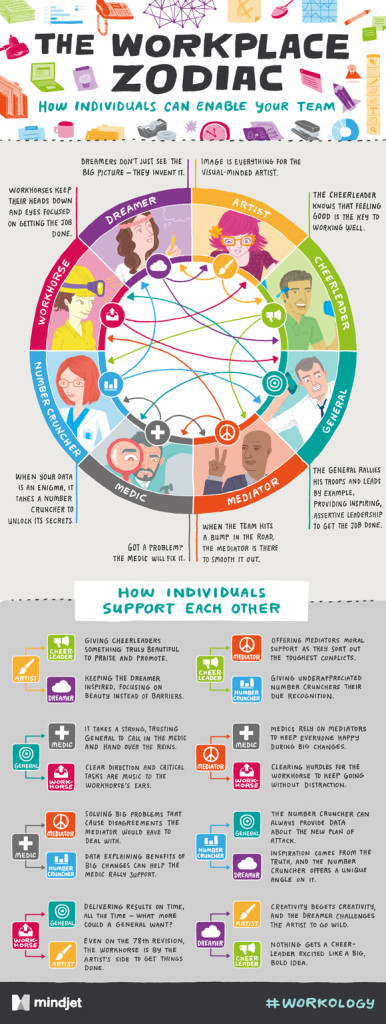Thanks to the Internet and mobile devices, expectations surrounding content creation and response time have completely changed. There is no languid turnaround time allotted for research and release, and creators know that you can only use the “lost in the ether” excuse once or twice before someone calls shenanigans on these excuses.
Accelerated creation is key in this constantly evolving digital age, but push for quantity over quality and you might get steamrolled by better-supported and more informative content.
While quality is crucial, it’s also important to realise that most businesses need that content yesterday; so what’s an agile business to do?
The science of stress: pressure as a motivator
“Fight or flight” came in handy when our Neanderthal ancestors were confronted by sabre-toothed bears and such. When humans experience stress, the body responds by shutting down certain ‘non-essential’ biological functions. Fast-forward to today and modern stressors like the need to meet deadlines produce the same physical response in us, and we become biologically compelled to ‘fight’ for self-preservation (like not getting fired). Pressure acts as a brilliant motivator, encouraging us to seek solutions to problems that we might otherwise overlook.
The question, though, is not really whether or not pressure can boost creativity and motivation, but how we can harness it to ensure that it does.
Take, for example, the astronauts from Apollo 13’s 1970 flight to the moon. As detailed by Nancy Atkinson, Apollo’s crew faced a potentially fatal disaster when an explosion severely damaged the ship’s air filtration system, causing CO2 to rapidly seep into the main cabin. It would’ve killed them all if the extraordinary pressure to jury-rig a new filter hadn’t caused them to quickly embrace their creativity and consider nonsensical options, one of which eventually worked and saved their lives.
Thankfully, most of us aren’t facing suffocation if we fail to produce creative ideas and content, but when what’s on the line is your brand or business, it sure can feel like it. As a marketer working in a global organisation which requires me to work with colleagues and suppliers across time zones, I know the challenge and pressure of trying to be creative for a meeting at 8pm and then again at 6am to catch up with global teams. The question, though, is not really whether or not pressure can boost creativity and motivation, but how we can harness it to ensure that it does.
Personalities, procrastination and problem-Solving
The act of being creative is utterly specific to the person doing the creating. So will be their reaction to pressure, which for some, is panic. Remember, it’s imperative to scale the amount and types of pressure against known factors — like job titles, typical work habits, and general levels of creative output — against unknowns, like whether or not someone’s personality is conducive to time restrictions, or if they’re a linear thinker versus a brainstormer.
Do you know what kind of worker you are? Do you fit into a preconceived role within your business, with quantifiable expectations? How do you organise your ideas – in a straight path, or in clusters? Do you procrastinate or plan? And, perhaps most importantly, do other people know any of this about you?
The answers should be straightforward, and help to loosely classify your “work personality.” According to Stephen R. Robbins, there are six types of workers: realistic, investigative, artistic, social, enterprising and conventional.
At Mindjet, we’ve also created our own ‘Workplace Zodiac’ which profiles some of the different work personalities in the office. Mindjet’s personality types and how they support other office workers are outlined in the graphic below.
Looking at Robbins’ paradigm, it’s likely that realistic and conventional types aren’t going to handle pressure constructively; these guys like concrete plans, by-the-book execution and aren’t fantastic with ambiguity. If you think this is you, embrace that your creativity requires time and space to grow. You might hate disruption, but give it a shot by adjusting your thinking habits or asking for input along the way, rather than just end-of-project feedback. Switching up your habits now and then often leads to innovation.
For the rest, stressors could be the key to unleashing out-of-the-box thinking, much like group brainstorming. Remember, too, that pressure doesn’t have to come in the form of shortened timelines. Stress that spawns ingenuity can be born out of a lack of preconceived tools and conventional solutions. In other words, consider what you could ask that you aren’t already asking. This could lead you off the beaten path and towards a unique resolution.
It’s imperative that you remain adaptable when trying to boost creativity. It requires an honest assessment of who you are and a willingness to attack your own weaknesses for the greater good. Think of the occupations that are most often associated with creativity, like music, art, and writing. They rarely bank on raw talent alone, but rather, are in a constant state of personal renovation where weaknesses are drawn on for inspiration. This is why being flexible in your creative habits will help you meet deadlines and create compelling end results.






